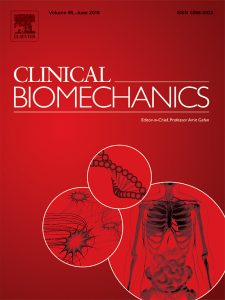Publications

Characterization of the mechanical changes of adductor muscles in the lower extremities for patients with multiple sclerosis
Authors: Tuba Maden 1, Hakan Polat 2, Emine Kilicparlar Cengiz 3
Affiliations:
- Department of PhysiotherapyandRehabilitation, Faculty of Health Sciences, Gaziantep University, Gaziantep, Turkey
- Department of Physiotherapy and Rehabilitation, Faculty of Health Sciences, SANKO University, Gaziantep, Turkey
- Department of Neurology, Dr. Ersin Arslan Training and Research Hospital, Gaziantep, Turkiye
Journal: Clinical Biomechanics - July 2025, In Press, Journal Pre-proof (DOI: 10.1016/j.clinbiomech.2025.106606)
-
Field & Applications:
- Medical
- Neurology
- Neurodegenerative disorder
- Progression monitoring
Background: It is important to know how the mechanical properties of the muscles change in the management of adductor spasticity in patients with Multiple Sclerosis.
Methods: This study was conducted by evaluating forty-two pwMS bilaterally. The Modified Ashworth Scale (MAS) was used to determine the hip adductor spasticity level, and pwMS were divided into four groups (MAS0, MAS1, MAS1+, MAS2) regarding the MAS grade. MyotonPRO® (Myoton AS, Estonia) was used to determine mechanical properties (tone, stiffness, elasticity) of the muscle from the (i) belly, (ii) musculotendinous, and (iii) tendon sites of the muscle.
Findings: The measurements obtained from the belly and musculotendinosus sites of the muscle were compared concerning the MAS, there was a difference in the tones and stiffness of the muscle (p < 0.05). There was no difference in elasticity values of belly and musculotendinosus sites (p > 0.05). Musculotendinosus sites’ tone and stiffness were different between MAS0 and MAS2 (p < 0.05). All of the myotonometer values were differences in tendon sites regarding the MAS (p < 0.05). The relationship between elasticity and the MAS was only present in the tendon region, and a moderate negative correlation was observed between them (r = 0.358, p < 0.05).
Interpretation: As spasticity progresses, the change in viscoelastic properties advances from contractile structures to non-contractile structures. Mechanical influence in the tendon area is not only confined to tone and stiffness, it also affects elasticity. In the techniques chosen for the management of spasticity, the regional characteristics of the muscle should be taken into consideration according to the severity of spasticity.
Keywords: hip adductors, mechanical properties, multiple sclerosis, muscle tone
The findings of this study, which examined the relationship between myotonic parameters and the MAS in adductor muscles in MS patients, provide strong evidence that there is a correlation between viscoelastic properties in three regions, particularly in tendon regions, and the MAS. Nevertheless, the myotonic parameters, which provide objective measurements, do not fully correspond to the subjective assessment of MAS. As spasticity progresses, the change in viscoelastic properties advances from contractile structures to non-contractile structures. Mechanical influence in the tendon area is not limited to tone and stiffness, it also affects elasticity. In the techniques chosen for the management of spasticity, the regional characteristics of the muscle should be taken into consideration considering the severity of spasticity. To manage the spasticity felt from the beginning of the movement, interventions should not be limited to the belly of the muscle only. Touching the tendon area can increase success in rehabilitation.


